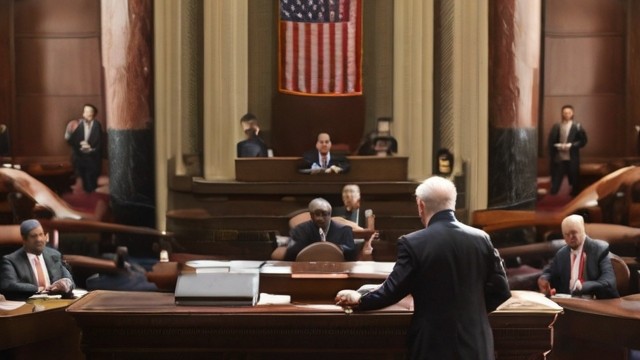The United States House of Representatives held more than 700 votes in 2023, but fewer than 30 bills were signed into law. Partisan politics may explain why, with polarization potentially causing enough friction to slow down the legislative process and make the passage of fewer, farther-reaching public laws likelier, according to researchers.
The collaborators from Penn State and Colorado State University studied levels of polarization and patterns in the passage of budget bills and public laws from 1948 through 2020. They found that as polarization increased, especially in the mid-1990s and 2000s, Congress passed fewer bills, but the bills they did pass were larger and led to more dramatic changes in public policy. They reported their findings in the Policy Studies Journal.
“Punctuated equilibrium theory is the idea that in the American policy process you tend to see periods of stasis or incremental changes occurring over time, and then occasionally bigger punctuations happen, like the passage of the Affordable Care Act or a big infrastructure bill,” said study co-author Daniel Mallinson, associate professor of public policy and administration at Penn State Harrisburg. “We found that as polarization has increased in the U.S., these dynamics of stasis and punctuation have gotten exaggerated. This happens because polarization introduces greater friction in policymaking, so it’s harder to change the status quo, but when you do, the change is bigger.”
The researchers focused on budget bills because of the ease of calculating percentage changes in line items from year to year, allowing them to capture incremental versus big changes. For the public laws analysis, they focused on the number of bills passed each year excluding symbolic laws, such as the renaming of a post office. The researchers used a five-year moving average approach — where the first five-year window covers years 1948-52, the second five-year window covers years 1949-53, and so on — to calculate kurtosis, or the distribution of these periods of stasis and punctuation in policymaking over time.
They used measurements of the difference of mean party ideology in the U.S. House of Representatives to track polarization over time. Then they plotted budget kurtosis, public law kurtosis and polarization over time and conducted additional analyses to see if factors like divided government could account for exaggerated patterns in the data.
“Our findings indicate that, while ‘gridlock’ is not accurately descriptive of Congressional behavior, we are seeing an increasingly unstable policy process, characterized by long periods of inaction punctuated by moments of enormous volatility,” said Clare Brock, first author of the study and assistant professor of American politics and public policy at Colorado State University. “This is not a new pattern, but it is becoming more exaggerated.”
The researchers found a correlation between polarization and periods of stasis and punctuation in policymaking. As polarization jumped in the 1990s and during President Barack Obama’s administration, the periods of stasis grew longer and Congress passed fewer bills, but the bills that did pass included large-scale changes in budgets.
“The scholarly and public narratives for a while now have been that Congress doesn’t do anything,” Mallinson said. “This work shows that maybe numerically Congress is doing less, not passing as much legislation or perhaps there is more stasis because of the effects of polarization, but Congress is still doing work that is important to the American public and impacts Americans’ lives.”
Understanding that government still works even during periods of stasis in policymaking is important for maintaining a healthy democracy, according to Mallinson. He and Brock are currently working on a book that examines polarization and its effects on policymaking in more detail.
“It’s a concerning belief when you think the government isn’t doing anything for you,” Mallinson said. “We see that belief manifest in populism and populist support for divisive candidates who take advantage of and perpetuate that problematic belief.”


